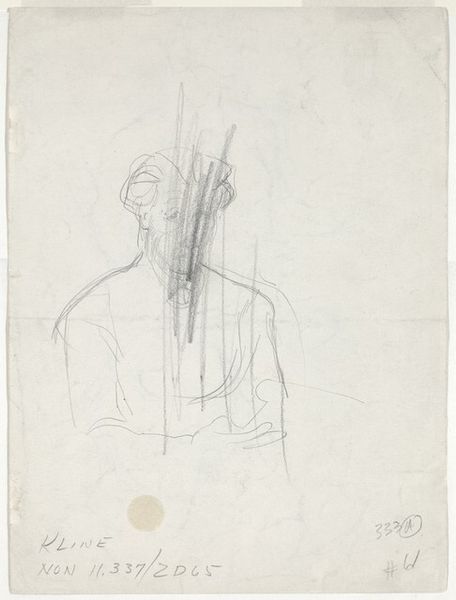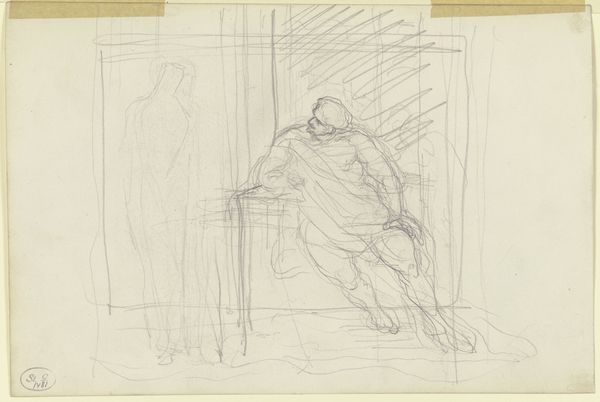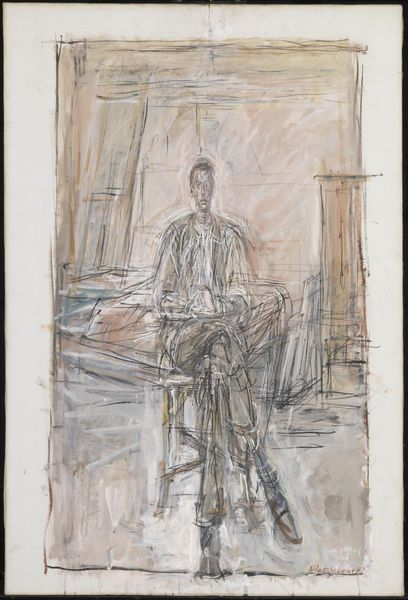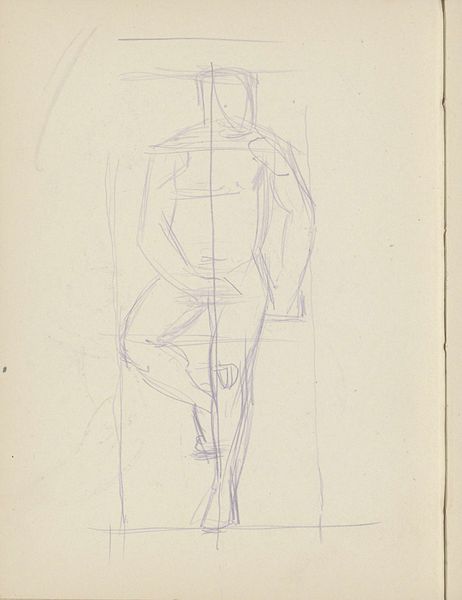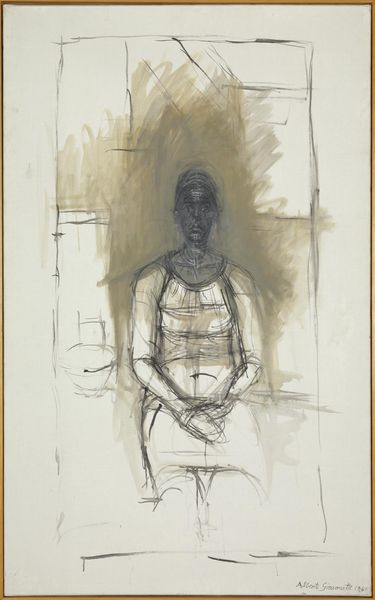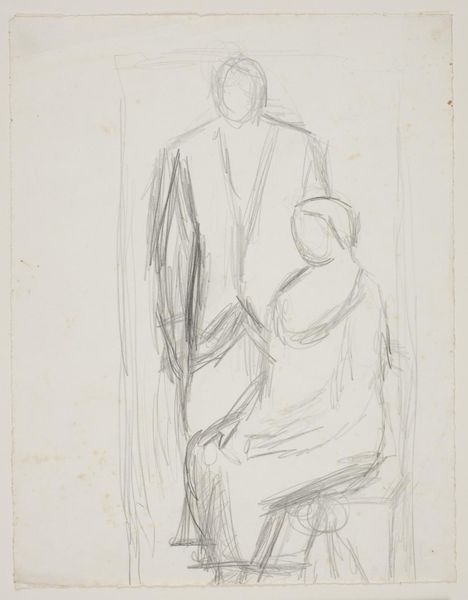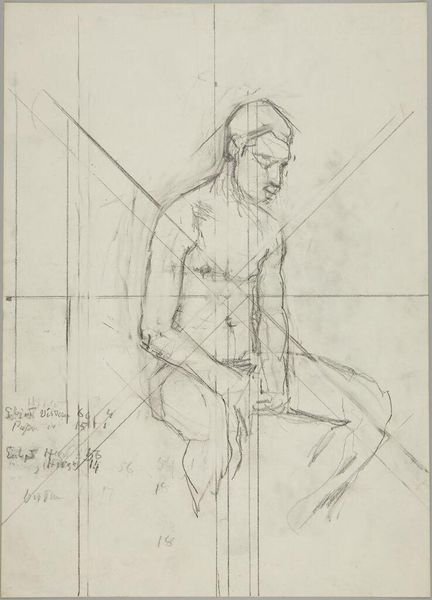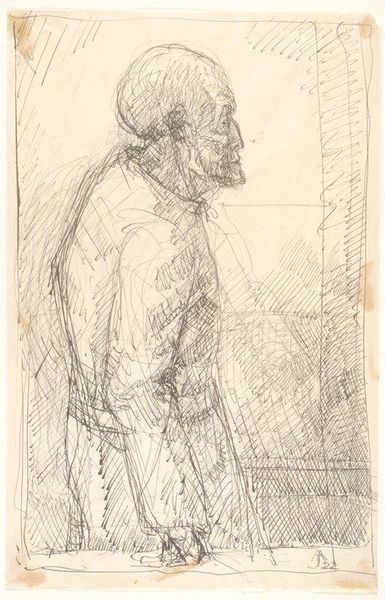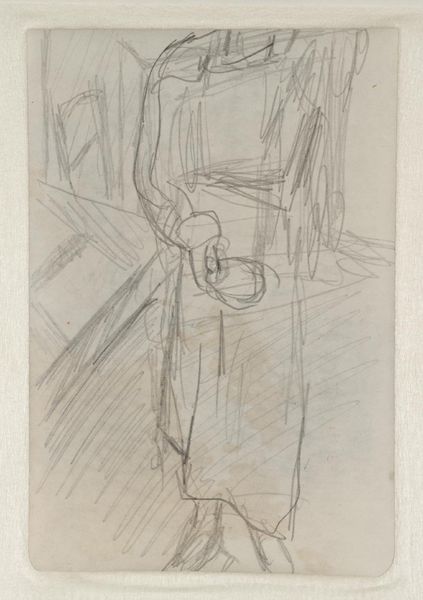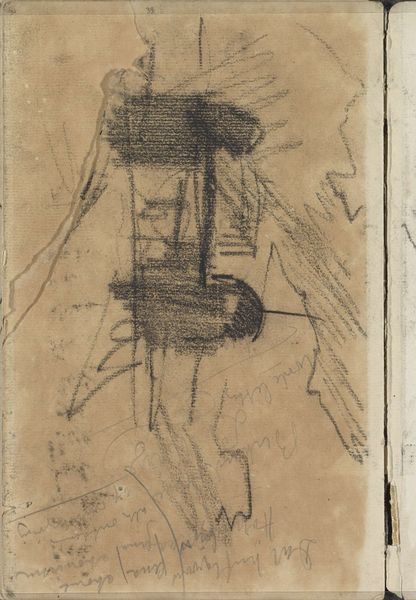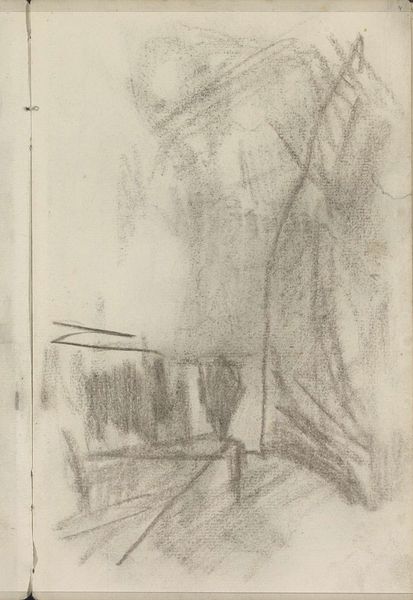
drawing
#
portrait
#
drawing
#
figuration
#
portrait drawing
#
modernism
Dimensions: sheet: 65.09 × 49.85 cm (25 5/8 × 19 5/8 in.)
Copyright: National Gallery of Art: CC0 1.0
Curator: Let's discuss Alberto Giacometti's drawing, "Diego Seated," created in 1948. Giacometti’s figuration during this time engages with postwar themes of alienation. Editor: It's immediately striking—raw and ephemeral. The skeletal lines seem to trap the sitter in a hazy, undefined space. There's something very urgent about the materiality of it, just pencil on paper. Curator: Absolutely. Giacometti's work following the Second World War often centered around depictions of isolated, attenuated figures that really speaks to the fragility of human existence within that period. It seems that even his drawing style became emaciated, matching the human forms he chose to depict. I imagine, the quick strokes and anxious linework show an element of his creative labor and state of mind, here. Editor: Yes, and his method of artistic production here suggests it could be read as an almost desperate act of creation and recording. This image underscores modern anxiety; the sketch aesthetic and repeated lines lend a feeling of continual editing and re-editing of reality and the sitter in the artist’s mind. The institutional implications too! After the War there was renewed focus on existential concerns about individual meaning in the age of mass industrial production. Giacometti encapsulates this mood by making sure it looks like these artworks cost him personally, they embody individual feeling. Curator: And don’t forget, Diego was his brother, and one of his most consistent models! We might consider what their relationship might say about art-making as a type of repetitive, everyday labor too? There is such tenderness in this familiar study. Editor: A fascinating idea. And what might be consumed here by the viewing public, decades later, beyond just a static image? We can consume the *act* of Giacometti capturing his brother! A charged encounter between model and maker which we also then enter. Curator: In this sense, this portrait encapsulates more than just a likeness of Diego, but also serves as a lens through which to understand Giacometti's artistic anxieties and postwar cultural sensitivities, made tangible through material means. Editor: I appreciate how contemplating this drawing makes visible the weight of cultural history upon something as simple as a pencil stroke.
Comments
No comments
Be the first to comment and join the conversation on the ultimate creative platform.
